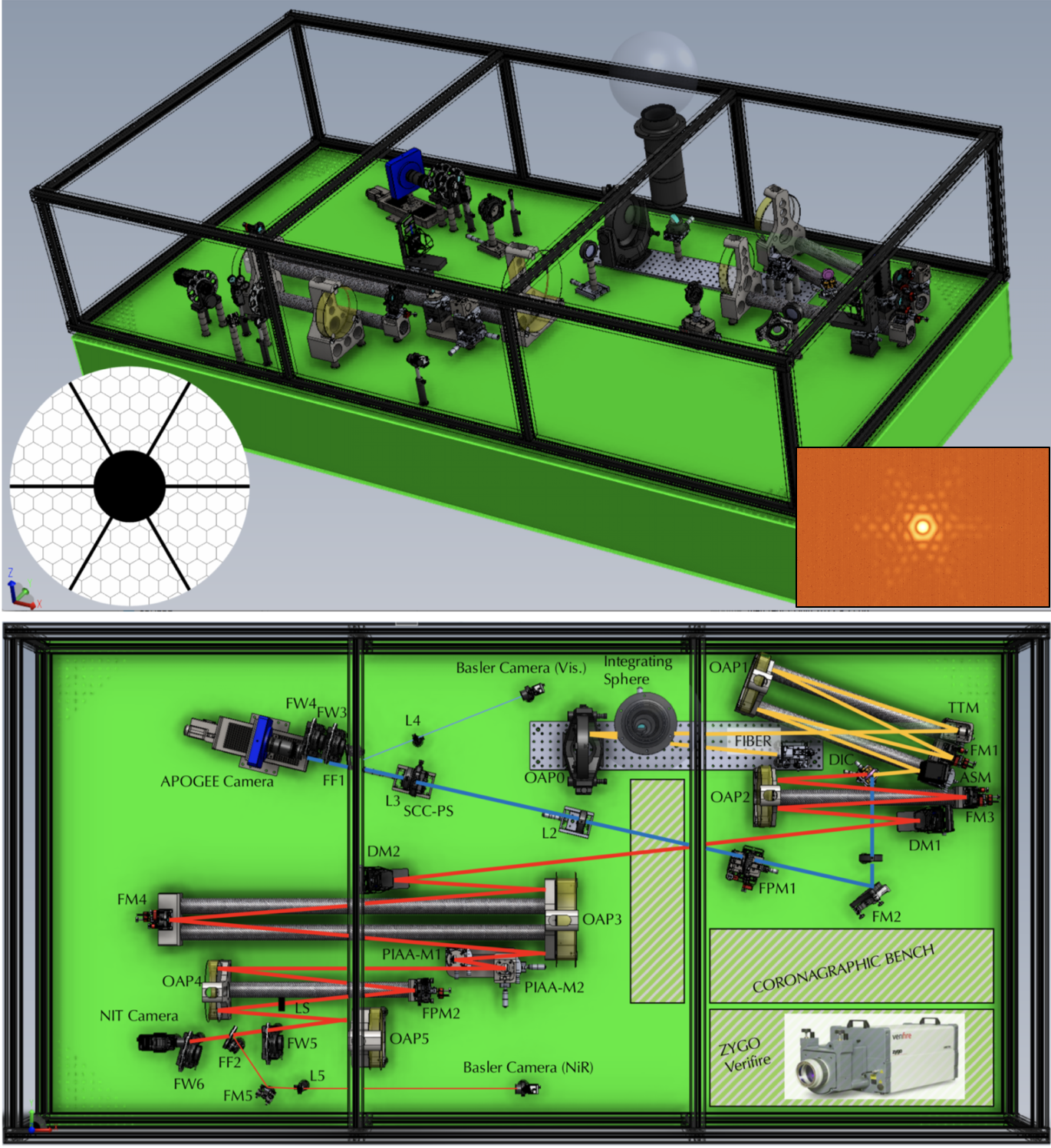
3D CAO view of the SPEED test-bed placed on a 1.5 x 2.4 m table with protection panels forming a nearly closed box. Colour code: telescope simulator and common path (orange), visible path (blue) and near-infrared path (red). Acronyms: TTM - tip/tilt mirror, OAP - off-axis parabola, ASM - active segmented mirror, DM - deformable mirror, FM - flat mirror, DIC - dichroic, L - lens, SCC-PS - self- coherent camera-phasing sensor, FPM - focal plan (mask), PIAA-M1 & PIAA-M2 - phase induced amplitude apodization mirror 1 & 2, LS - Lyot stop, APOGEE - visible camera, NIT - near-infrared camera, Basler - pupil camera (Vis. and NiR), FF - flip flop mirror, FW - filter wheel.
The NiR PSF is presented in the top right of the image and exhibits >98% Strehl ration (pupil is shown in the top left image).
The SPEED bench is now ending its AITs phase and can start the exploitation phase. In its final state, the SPEED bench has a lot of devices: 4 detectors and 2 webcams, 3 lamps, ∼25 motorized functions, 5 sensors, 12 piezo actuators, 2 shutters, 3 deformable mirrors (DM), 1 tip/tilt mirror (TTM), etc. We operate the bench completely covered with protection panels forming a nearly closed box to minimize the internal turbulence and optimize stability. All movable components (filters, neutral densities, phase masks, etc.) are motorized to guarantee positioning accuracy, stability, and reproducibility. The stability of the whole system was a part of the major concerns at the early stage of bench development. It is measured (room, table, sub-systems), monitored, or pre-compensated by design as far as possible. The instrument proposes five observing modes: three engineering modes enabling pupil control and monitoring in the near and visible arms (Basler cameras, Vis. and NiR, and NIT camera in combination with a lens in a filter wheel, FW5), a science observing mode for cophasing optics (closed-loop control) and a science observation mode for real-time coronagraphic and dark-hole observations. The bench also accommodates on its table a separated coronagraphic test-bed (hatched area) for controlling performance evaluation of (PIAA) FPMs before inserting them on the SPEED optical path. The coronagraphic bench has the same entrance pupil (but not segmented) with the same f-number at the coronagraphic focus. In addition, we use a ZYGO interferometer for metrological or alignment purposes.






